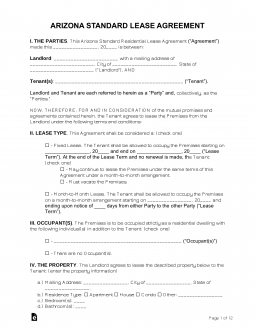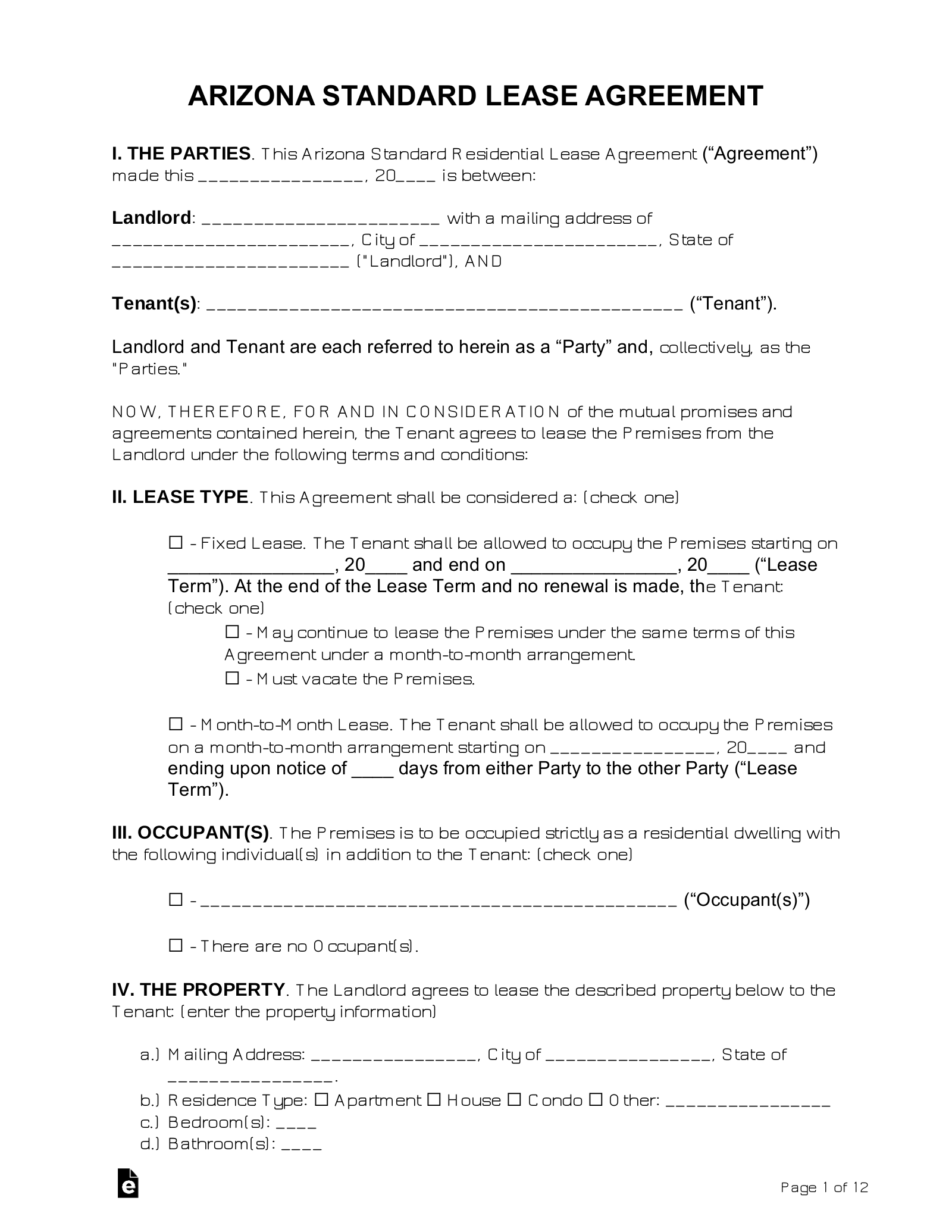Updated July 14, 2023
An Arizona standard lease agreement is a fixed-term contract between a landlord and tenant for the use of a residential property. The tenant may be required to submit personal information prior to signing the lease to validate their credit and prove they can pay the monthly rent. After signing, the tenant should pay the first month’s rent and security deposit in order to obtain keys and access to the premises.
Laws – Title 33, Chapter 10 (Residential Landlord and Tenant Act)
Handbook – Arizona Tenants’ Rights and Responsibilities Handbook (PDF)


